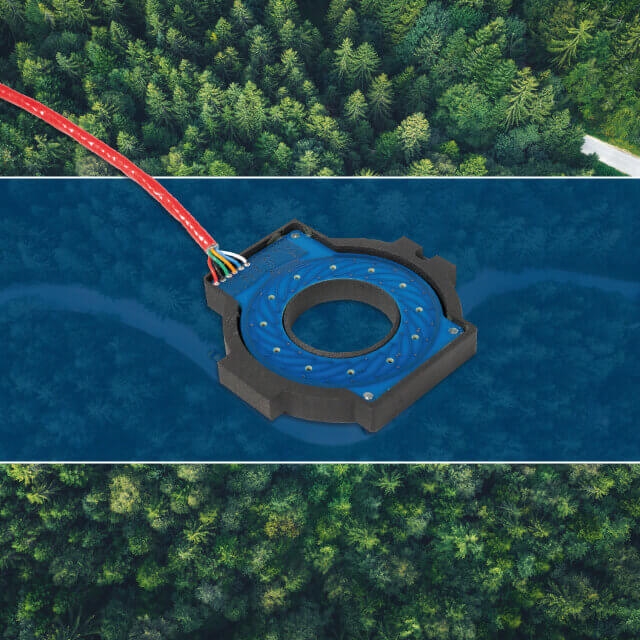Acceleration Sensing for Active Damping

The chassis acceleration sensor from CTS Corporation is a flexible, single axis accelerometer device that enables critical active suspension and damping functionalities for all manner of automotive vehicles. Measuring acceleration motion, the chassis acceleration sensor transmits crucial data to the vehicle’s electronic control unit (ECU), in turn enabling real-time damping forces to counteract the detrimental effects for instance shock impacts and body roll. These active damping responses lead to a safer and more comfortable driving experience, significantly improving the driver’s control of the vehicle.
Suspension Systems in Modern Vehicles
 Vehicles of all kinds employ a multitude of springs, linkages, arms and dampers to absorb bumps and shocks, maintain proper tire contact with the road surface and improve the overall vehicle handling by mitigating the shifting weight distribution when turning.
Vehicles of all kinds employ a multitude of springs, linkages, arms and dampers to absorb bumps and shocks, maintain proper tire contact with the road surface and improve the overall vehicle handling by mitigating the shifting weight distribution when turning.
Together, these components constitute the vehicle’s suspension system. Such systems have long since become an absolute necessity in any vehicle type, be it commercial, passenger-oriented or otherwise. A well-functioning suspension system is a critical automotive feature that not only ensures a certain level of ride comfort to which drivers and passengers have been accustomed, but also improves vehicle control, making driving safer in general.
In older vehicle models, suspension systems were purely passive, meaning that they would simply react to the forces they were exposed to, providing rudimental alleviation. In modern vehicles, however, suspension systems are becoming much more advanced. A range of electronics, sensors and actuators are employed to adjust suspension system behavior in real-time in response to changing driving conditions. The ability to detect dynamic motion and apply appropriate counter-forces greatly increases the driver’s control of the vehicle and makes for a safer, smoother and more pleasant driving experience.
Advantages of Active Suspension

The advantages of active vehicle suspension are numerous and easy to recognize. When a vehicle is forced to make a sudden and sharp turn, its body weight will shift outwards (known as ‘body roll’), causing it to lean into the corner and consequently reduce the tires’ contact with the surface. A passive suspension system will not be able to quickly compensate for this dynamic shift in motion, leading to diminished control of the vehicle for the driver and potentially to unsafe situations.
With an active suspension system, however, acceleration sensors will immediately detect the lateral body roll of the vehicle and transmit this information to its electronic control unit (ECU). Using this information, the ECU will instantly signal the wheel actuators to stiffen the outer suspension and lowering the inner side in order to mitigate the body roll and stabilize the vehicle. This feature leads to more flat cornering in general with improved road grip and ride comfort.
An active suspension system will enable such active damping forces for the instant adjustment to dynamic vehicle motions. Sharp turns, sudden acceleration and deceleration as well as bumps and potholes in the road all become easier and safer to negotiate for an overall improved and more secure driving experience.
The CTS Chassis Acceleration Sensor
To enable active suspension systems of modern vehicles, CTS Corporation has developed the chassis acceleration sensor. Mounted on the vehicle’s chassis or body, this accelerometer technology will measure the dynamic motion of the vehicle using a MEMS chip and transmit the information by means of a PSI5 protocol to the ECU, enabling appropriate adjustment of the active damping forces in the suspension system.
The chassis acceleration sensor can provide single and, by implementing several units, multi-axis sensing for measuring the full range of dynamic vehicle motion. It has a high bandwidth for highly accurate acceleration readings and can be configured to two different active sensing ranges to meet specific system requirements.
In terms of mechanical design, the chassis acceleration sensor has been built with both simplicity and robustness in mind. It is very flexible in terms of mounting position and can easily be adapted to fit a wide range of applications and system architectures. The robust design also allows full EMC compliance, a wide operating temperature range and high resilience to mud, gravel, water and ice exposure.
| CTS Chassis Acceleration Sensor | |||||
|---|---|---|---|---|---|
| Sensing Range | Bandwidth | Supply Voltage | Operating Temperature | Output | Sealing |
| ±1.6g, ±16g | 12.5 - 1500 Hz | 8V ±3 | -40 to 125°C | PSI5 | IP6K9K |
CTS Adaptive Driving Sensor Suite
The CTS chassis acceleration sensor is part of our Adaptive Driving Sensor Suite, a growing portfolio of precision sensors engineered to deliver real-time feedback for dynamic ride and chassis control in vehicles of all kinds.
Together with CTS’ proven Ride Height Sensors (RHS), our suite provides OEMs and Tier 1s with a modular, scalable foundation for advanced vehicle suspension and body dynamics. From electric vehicles to high-performance platforms, our portfolio empowers manufacturers to deliver safer, smoother and more personalized driving experiences.






